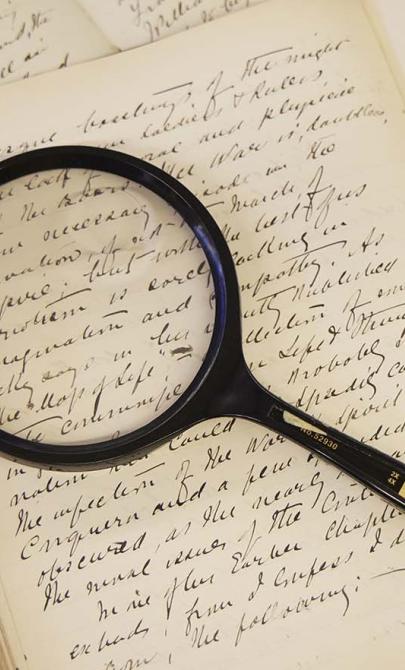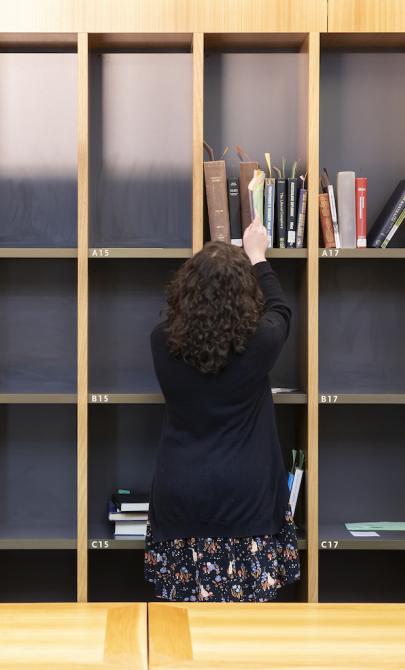Luce Collection
Key items in the collection
Highlights from this collection demonstrate its historical significance and variety.
The Luce Collection contains about 2000 books, pamphlets and serials. Most of the works are in English, but there are also some French, German and Dutch publications, over 100 titles in Burmese languages, and dictionaries, grammars and translations of Christian texts in various Asian languages. While the great strength of the collection is its Burmese materials, the scope of the collection is broad and includes books on the history and culture of Thailand, Cambodia, Laos, China, India and Indonesia. The language materials are even broader, extending to Tibetan, Persian, Japanese and Pacific languages.
The coverage of Burma is comprehensive, taking in history, archaeology, inscriptions, geography, botany, agriculture, languages, tribal customs, travels, memoirs, art and architecture. Most of the books were published in the period 1900–70, but there are a number of nineteenth-century imprints, such as:
- Cox, Hiram, Journal of a Residence in the Burmhan Empire (1821)
- Crawfurd, John, Journal of an Embassy from the Governor-General of India to the Court of Ava (1834)
- Deveria, G., La frontière Sino-Annamite (1886)
- Judson, A., Grammar of the Burmese Language (1866)
- McMahon, A.R., Karens of the Golden Chersonese (1876)
- Mason, Ellen, Civilizing Mountain Men: Or Sketches of Mission Work Among the Karens (1864)
- Neale, Fred, Narrative of a Residence at the Capital of the Kingdom of Siam (1852)
- Snodgrass, John, Narrative of the Burmese War (1827)
- Winter, Charles, Six Months in British Burmah (1858).
The collection is strong in government reports and learned journals. Examples include:
- Archaeological Department of Burma, Report of the Superintendent, 1906–54
- Archaeological Survey of India, Annual Report, 1902–38
- British Burma Gazetteer, 1879–80
- Burma Gazetteer, 1910–35
- Epigraphia Birmanica, 1919–36
- Gazetteer of Upper Burma and the Shan States, 1900–01
- Journal of the Royal Asiatic Society, 1964–79
- Journal of the Siam Society, 1905–37, 1946–77.
The pictorial component of the Luce Collection consists of four albums, 21 boxes of glass negatives and 75 prints, dating from about 1919 to 1958. They depict ancient Burmese statues, coins, jewellery, stone inscriptions, stone carvings and village scenes.
There are 170 maps in the Luce Collection, mostly of Burma but including a few of Thailand, Indo–China, China and Assam. About 100 of the maps were produced by the Survey of India between 1928 and 1946. There are also 13 large-scale maps produced by the British Army in 1942–46 and seven aeronautical charts produced by the United States Air Force in 1949–52. Earlier maps include a map of the Malay Peninsula (London, 1906), a map of Yunnan (London, 1908) and an undated map of Burma produced by the American Baptist Mission Press. There is a large modern manuscript map of Burma in the early Pagan period.
Most of Luce’s papers and manuscripts were lost during World War II, so the archives held in the Library relate largely to the period 1945–79. It is divided into the following series:
- General correspondence, 1922–79
- Diaries, notebooks, personal documents
- Old Burma–Early Pagan
- Phases of pre-Pagan Burma
- Other manuscripts by Luce
- Paris lectures, 1967–68
- Word lists
- Conferences, 1958–77
- Cuttings and publications
- Manuscripts and publications of other writers
- Miscellaneous papers
The correspondents include many scholars of South-East Asia, such as D.G.E. Hall, Oliver Wolters, Charles Blagden, H.L. Shorto, Alexander Griswold and G.E. Harvey, and Burmese scholars and writers. The word lists, based on research carried out among minority groups in remote parts of Burma, include Old Mon, Middle Mon, Late Mon, Old Khmer, Karen and other languages, and Chinese, Tibetan, Vietnamese and Sanskrit loan words.
About Gordon Luce
Gordon Hannington Luce (1889–1979) was born in Gloucester, England. He was educated at Dean Close School, Cheltenham, and Emmanuel College, Cambridge, where he read classics and English literature. His Cambridge friends included Rupert Brooke, Arthur Waley, E.M. Forster, Maynard Keynes and others who were later associated with the Bloomsbury Group. In 1912 he was appointed Lecturer in English Literature at Government College in Rangoon. The University of Rangoon was established in 1920 and Luce, who had been on study leave at the University of London and the Sorbonne, was offered a readership in history. Following the Japanese invasion of Burma in 1942, he and his wife Tee Tee fled to northern Burma and then across mountain paths to India. They returned to Rangoon in 1946. Luce was given a personal Chair of History at the University of Rangoon in 1953. In 1964 he was forced to leave the country for a second time, on account of his foreign nationality. He spent the rest of his life on a farm in Jersey, one of the Channel Islands.
Soon after his arrival in Rangoon, Luce became deeply interested in Burmese culture. He was encouraged by a Pali scholar, Pe Maung Tin, whose sister he married in 1915. He wrote many articles and translations on Burmese language, history, art, inscriptions and architecture, and particularly the culture of Pagan, the old Burmese capital. His magnum opus was the three-volume Old Burma: Early Pagan (1969–70). Phases of Pre-Pagan Burma was published posthumously in 1985.
Luce built up a huge library of books, card indexes of Burmese languages and transcriptions. He had to abandon it in 1942 and it was lost, possibly due to bombing and looting. After World War II, he rebuilt his collection, one of the finest private collections on Burmese history and culture.
Background to the collection
The Library expressed strong interest in the Luce Collection as early as 1963, when Harold White, the National Librarian, visited Luce in Rangoon. However, it was not until after his death that his family decided that the collection, including Luce’s manuscripts and personal papers, should go to Canberra. It was purchased in 1980.
The printed materials in the Luce Collection are kept together as a collection within the Asian Collections. The books and serials are individually catalogued; the call numbers have the prefix LUCE. The photographs are housed in the Pictures Collection. The maps are kept in the Maps Collection and have been individually catalogued. They have all been digitised and are available online. The papers and manuscripts are housed in the Manuscripts Collection. A finding aid is available online.
This guide was prepared using these references:
- Shin, B.A., Boisselier, Jean, and Griswold, A.B., (eds), Essays Offered to G.H. Luce by his Colleagues and Friends in Honour of his Seventy-fifth Birthday, 2 vols, Ascona, Artibus Asiae, 1976.
- Hall, D.G.E., Obituary: Gordon Hannington Luce, Bulletin of the School of Oriental and African Studies, University of London, vol. 43 (3), 1980, pp. 581–8.
- Gosling, Andrew, Burma and Beyond: The Luce Collection at the National Library of Australia, National Library of Australia News, vol. 6 (13), October 1996, pp. 3–5.



